From the September 2023 issue of Apollo. Preview and subscribe here.
The early history of photography is dominated by the names of men. But in the mid 19th century, picking up from the earlier experiments of Thomas Wedgwood and working at the same time as Louis Daguerre and William Henry Fox Talbot, a botanist named Anna Atkins made some of the period’s most exquisite photographic images. By the time of her death in 1871 at the age of 72, however, her work was almost completely forgotten. In 1864, Talbot wrote an article mentioning ‘a lady, some years ago, [who] photographed the entire series of British seaweeds, and most kindly and liberally distributed the copies to persons interested in botany and photography’. When Atkins’ cyanotype prints were exhibited for the first time in 1888, the curator assumed that the initials ‘A.A.’ stood for ‘anonymous amateur’.
Although Atkins’ stature has grown in recent years – thanks in part to the research of the scholar Larry Schaaf – a comprehensive and high-quality monograph on her work did not exist until the publication by Taschen of Anna Atkins: Cyanotypes, a lavish, slip-cased book with texts by Peter Walther.
The cameraless photograms of Anna Atkins are instantly recognisable: they typically consist of a ghostly pale silhouette of a plant or lichen floating on a blue ground. While some may be more individually spectacular than others, they make best sense in series, when Atkins’ methodical objectivity is most clearly conveyed. Her gaze – which one might even describe as mechanical – now seems radically modern, anticipating, perhaps, the rigour and austerity of Bernd and Hilla Becher’s photographic series of water towers and blast furnaces.
The work lends itself especially well to republication because it was made, originally, in book form. During her lifetime, Atkins produced volumes of cyanotypes, each unique plate recording a particular botanical specimen. She self-published the books (at her own expense) in very small editions, sewing volumes of a dozen or so prints together by hand, and gave them to institutions such as the Royal Society and the British Museum and to fellow photographic pioneers such as Talbot. No two books were quite the same and many have been unbound and dispersed. Complete versions exist in such museums as the Getty and the Met.
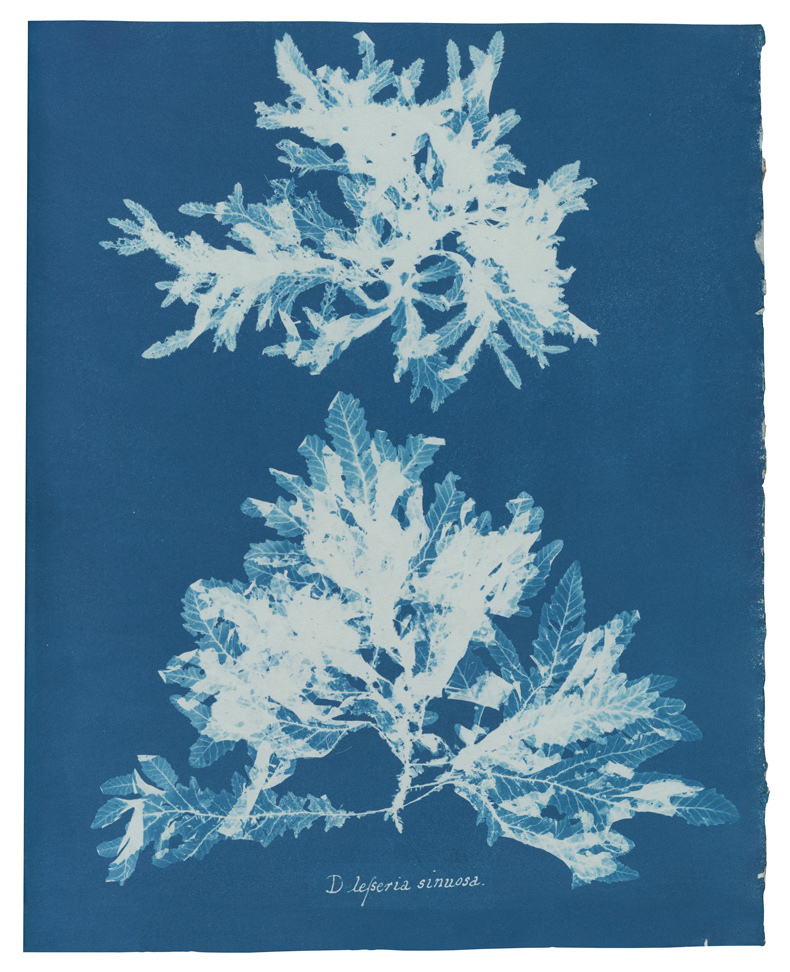
Delesseria sinuosa from Part V of Photographs of British Algae: Cyanotype Impressions (1845) by Anna Atkins. New York Public Library
Atkins pursued her botanical interests in great depth. Photographs of British Algae: Cyanotype Impressions (1843–53) was followed by Cyanotypes of British and Foreign Ferns (1853) and then Cyanotypes of British and Foreign Flowering Plants and Ferns (1854), the latter two made with her friend Anne Dixon, née Austen. The volumes of British Algae are reproduced by Taschen in full, along with the more modest Cyanotypes of British and Foreign Ferns. Atkins’ final work, Cyanotypes of British and Foreign Flowering Plants and Ferns, was separated and resold after auction in 1981 and is considered unrecoverable.
Atkins’ life is a case study in the contrasts of privilege and tragedy, self-determination and predestiny. She owed much to the influence of her father, John Children, the son of a wealthy landowner and banker, who raised her after Atkins’ mother died soon after she was born.
Children was a keen amateur scientist, even if the distinction between amateur and professional barely existed at the time. When, in 1809, Children’s second wife died only eight months into their marriage, he buried himself in his work. He was elected a Fellow of the Royal Society and developed friendships with scientists such as Talbot and Humphry Davy, who were both experimenting with photography. He also encouraged Atkins’ interests, giving her chemistry lessons in his laboratory. She was devoted to her father and he clearly doted on her too. In 1811, Anne Austen, the daughter of one of Children’s friends (and a second cousin of writer Jane), came to live with the family after her own mother died. Austen was like a sister to Atkins and later became her collaborator.
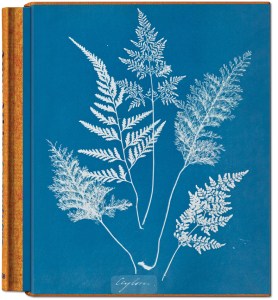
Anna Atkins: Cyanotypes by Peter Walther (ed.), published by Taschen
In 1839, Talbot presented his invention of the calotype, a method for fixing an impression on light-sensitive material. His early experiments used leaves and moss as subjects. The complicated technique was soon simplified by his friend John Herschel, who called his improved method the cyanotype: ultraviolet light turns an iron salt blue; on white paper, the parts not touched by light remain white. The technique was particularly suited to Atkins’ method of gathering and arranging botanical samples, under glass, directly on the paper.
It was not long after the emergence of the cyanotype that Atkins encountered A Manual of The British Algae (1841) by William Henry Harvey. While comprehensive, the book contained no illustrations, and Atkins saw an opportunity to complement his study with her own.
Botany was one of the few fields of science open to women at this time. In his essay ‘Botanophilia and Fern Fever’, Walther details the bourgeoisie’s fascination with botany in Europe and the United States and the interest in studying local specimens rather than exotic imports. Botanophilia, he says, transcended not only gender but also class; during the Victorian era, blue-collar labourers and aristocrats alike would collect ferns, often displaying them in miniature greenhouses called Wardian cases. Algae can be almost comically unprepossessing, but ferns possess more aesthetic elan and thus provided Atkins with a fashionable theme for her first project.
Though she was interested in art (and with her husband collected paintings by Correggio, Caravaggio and Bruegel), there is no evidence that Atkins saw herself as an artist. (It was many decades before photographers would apply such a designation to themselves.) The cyanotypes appeal, today, partly for their restrained coolness, but they can be seductive too; the pictures delight us with their subtle intricacy or ravishing exuberance. Not that such a dedicated scientist as Atkins would have aspired to anything so frivolous or arty.
Anna Atkins: Cyanotypes by Peter Walther (ed.) is published by Taschen.
From the September 2023 issue of Apollo. Preview and subscribe here.
Unlimited access from just $16 every 3 months
Subscribe to get unlimited and exclusive access to the top art stories, interviews and exhibition reviews.

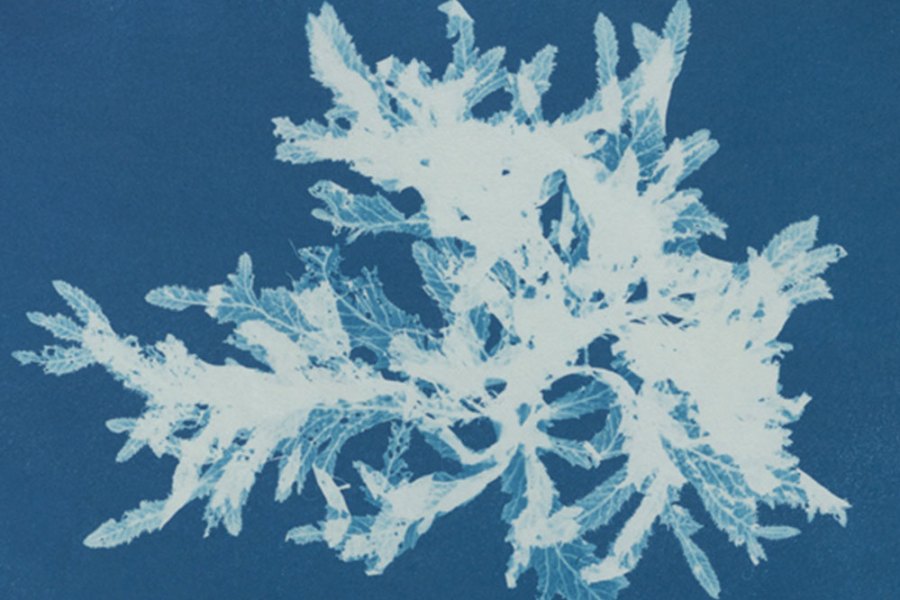
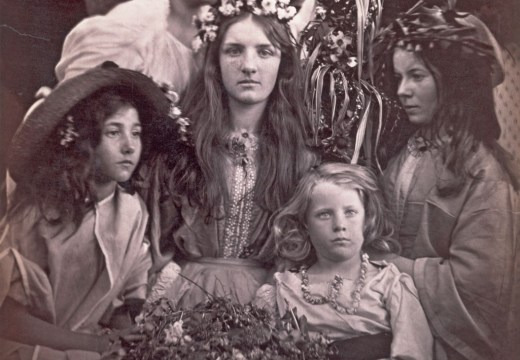
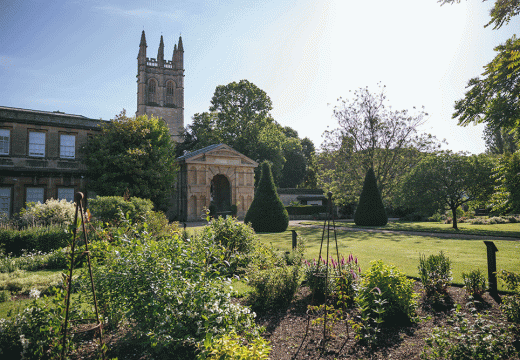










![Masterpiece [Re]discovery 2022. Photo: Ben Fisher Photography, courtesy of Masterpiece London](http://www.apollo-magazine.com/wp-content/uploads/2022/07/MPL2022_4263.jpg)
Has the Fitzwilliam lost the hang of things?